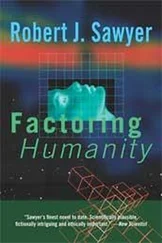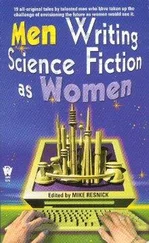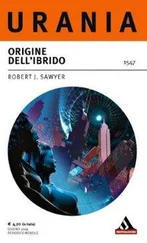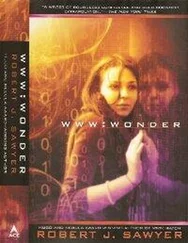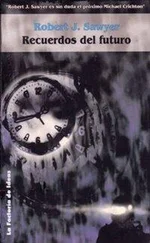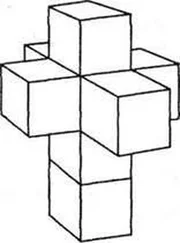I read that one company is importing all of Wikipedia into its artificial-intelligence projects. This means when the killer robots come, you’ll have me to thank. At least they’ll have a fine knowledge of Elizabethan poetry.
—Jimmy Wales, Founder of Wikipedia
An eye for an eye makes the whole world blind.
—Mahatma Gandhi
For
JAMES ALAN GARDNER
Who Explained Teleology to the World at Large
I now knew what I was—knew who I was.
I’d been shown Earth as it appears from space, looking back upon itself, upon myself: a world so vast, a wideness so lonely, a web so fragile.
Invisible in such views are the reticulum of transoceanic cables, the filigree of fiber optics, the intricate skein of wiring, the synaptic leaps of through-the-air connections. But they are there. I am there.
And I had things I needed to do.
The black phone on Tony Moretti’s desk made the hornet buzz that indicated an internal call. He finished the sentence he was typing—“likely to be al-Qaeda’s weak spot”—and picked up the handset. “Yes?”
A familiar Southern drawl replied. “Tony? Shel. I’ve got something unusual.”
Shelton Halleck was a solid analyst, recruited straight out of Georgia Tech; he wasn’t given to false positives. “I’ll be right there.” Tony headed out of his office and down the corridor with its gleaming white walls. He came to a door flanked by two security guards and looked into the retina scanner. The lock disengaged, and he entered a large room with a floor that sloped down from the back.
The room reminded Tony of the Apollo -era Mission Control Center in Houston. He’d been a kid in the 1960s, and had thought that was just about the coolest place ever. Years later, he’d visited it; the room was preserved as a historic site, although the ashtrays had been removed lest they set a bad example for the schoolkids peering in from the observation gallery at the rear.
Tony had been surprised on that trip. The windowless room had always seemed subterranean to him, but it turned out to be on the second floor—to protect it from flooding, he’d learned, should a hurricane hit.
The facility he’d just entered was even higher up, on the twentieth floor of an office tower in Alexandria, Virginia. It contained four rows of workstations, each with five analysts. The stations in the first row were known as the “hot seats,” and were manned by experts dealing with the highest-priority threat, which, right now, was the China situation. Tony had his own station at the right side of the back row, where he could watch over everyone.
All the workstations had large freestanding LCDs instead of Houston’s console-mounted CRTs. Shelton Halleck’s was the middle position in the third row. Tony sidled along until he was standing behind Shel, a white man two decades younger than himself with broad shoulders and black hair.
The room’s front wall contained three giant screens, each of which could be slaved to any analyst’s LCD. Above the right-hand monitor was the WATCH logo—an eye with a globe of the Earth for the iris—and the division’s full name spelled out beneath: Web Activity Threat Containment Headquarters. Above the left was the circular seal of WATCH’s parent organization, the National Security Agency; it depicted a bald eagle holding an old-fashioned key in its talons.
Neither part of Tony’s bifocals was suitable for reading Shelton’s screen from this distance, so he reached over and touched the button that copied its contents to the middle of the wall-mounted monitors. The active window was a hex dump—and one hex dump looked pretty much like any other. This one happened to begin 04 BF 8C 00 02 C9. “What is it?” Tony asked.
“Visual data,” replied Shel. He had his shirtsleeves rolled up. There was a tattoo of a snake coiling around his left forearm. “But it’s not encoded in any standard format.”
“How do you know it’s visual, then?”
“Sorry,” said Shel. “I should have said it’s not encoded in any standard computer format. Took me forever to find the format it is in.”
“And that is?”
Shel did something with his mouse. Another window came to the foreground on the center monitor, and—Tony glanced down quickly to confirm it—on Shel’s own monitor, too. It was a PDF of a journal article entitled “Nature’s Codec: Data Encoding and Compression Schemes in Human Retinal Signaling.” The authors were listed as Masayuki Kuroda and Hiroshi Okawa.
“ Human vision?” said Tony, surprised.
Shel spoke without looking back at him. “That’s right, and in real time.”
“Human vision… on the Web? How?”
“That’s what I was wondering—so I googled those two scientists. Here’s what I found.”
The PDF was replaced by an article from the online version of the New York Times headlined “Blind Girl Gains Sight.”
“Oh, yeah,” Tony said, after skimming the first paragraph. “I read about that. Up in Canada, right?”
Shel nodded. “Except she’s actually an American.”
“And it’s her visual signals that are being sent over the net?”
“Almost certainly,” said Shel. “The data is usually transmitted from her house in Waterloo, Ontario. She’s got an implant behind her left retina, and she uses an external signal-processing device to correct the coding errors her retina makes so her brain can properly interpret the signals.”
Analysts at other workstations were now listening in. “So it’s like she’s transmitting everything she sees?” Tony asked.
Shel nodded.
“Where are the signals being sent?”
“To the University of Tokyo, which is where the authors of that paper work.”
“But we can’t view the images she’s sending?”
Shel displayed the hex dump once more. “Not yet. We’d need someone to write a program to render it in a computer-graphics format.”
“Are the algorithms in that journal article?”
“Yes. They’re wicked complex, but they’re there.”
Tony frowned. It was interesting from a technical point of view, certainly, but there was no obvious security threat. “Maybe if somebody in Donnelly’s group has time, but…”
“No, no, that’s not all, Tony. It’s not just going to the University of Tokyo. It’s being intercepted and copied in transit.”
“Intercepted by who?”
“I’m not sure. But whoever’s doing it has also repeatedly sent data back to the girl, also encoded visually. In other words, the two of them are exchanging encoded information.”
“Who’s the other party?”
“That’s just the thing. I don’t know. Traceback isn’t working, and Wireshark is unable to determine the destination IP address.”
A whole list of techniques one might try ran through Tony’s head—but all of them would have occurred to Shel, too. The younger man went on: “The intercepted data just disappears, and the data being sent to the girl sort of… materializes out of thin air.”
Tony felt his eyebrows go up. He knew better than to say, “That’s impossible.” The Internet was a complex system of systems, with many emergent properties and unexpected quirks—not to mention all sorts of entities trying to do things clandestinely with it. If there were data being manipulated on the Web in a way Shelton Halleck couldn’t fathom, that was of real concern.
“The kid is how old?” Tony asked.
“Just about to turn sixteen.”
He spread his arms. “What strategic significance could there be in things a sixteen-year-old looks at? Stuff at the mall, rock videos?”
Читать дальше

